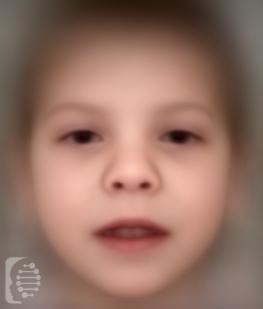What is Smith-Lemli-Opitz syndrome?
Smith-Lemli-Opitz syndrome is a variable genetic disorder characterized by slow growth both before and after birth. It is thought to occur in anywhere from 1 in 20-60,000 live births.
This rare disease is also known as multiple congenital anomaly disorder, presenting with intellectual disability.
The syndrome is most common in Caucasians of Central European descent. But extremely rare amongst African and Asian populations.
Syndrome Synonyms:
Lethal Acrodysgenital Syndrome; Polydactyly, Sex Reversal, Renal Hypoplasia, and Unilobar Lung; RSH Syndrome; Rutledge Lethal Multiple Congenital Anomaly Syndrome; SLO Syndrome
What gene change causes Smith-Lemli-Opitz syndrome?
Mutations in the DHCR7 gene lead to a deficiency of enzyme 7 dehydrocholesterol reductase. This leads to low cholesterol levels and the resulting Smith-Lemli-Opitz syndrome. The syndrome is inherited in an autosomal recessive pattern.
Autosomal recessive inheritance means an affected individual receives one copy of a mutated gene from each of their parents, giving them two copies of a mutated gene. Parents, who carry only one copy of the gene mutation will not generally show any symptoms but have a 25% chance of passing the copies of the gene mutations onto each of their children.
What are the main symptoms of Smith-Lemli-Opitz syndrome?
Symptoms may vary from mild to moderate, but the main symptoms of Smith-Lemli-Opitz syndrome are behavioral and learning problems. Most individuals with the syndrome receive a separate diagnosis of autism or display autistic tendencies. Self-injurious and aggressive behaviors are also often present in individuals with the syndrome.
Typical facial characteristics of the syndrome include a broad nasal bridge, small chin, low set ears, high arched palate, long upper lip, small jaw, large ears, and drooping eyelids. Some individuals are born with extra fingers and or toes, and a fusing of the 2nd and 3rd toes is a common feature of the syndrome.
Other symptoms include chronic sleep problems, photosensitivity, other sensory issues, genital abnormalities, and multiple birth defects (congenital disabilities), including those relating to the heart, gastrointestinal tract, lungs, and kidneys.
Possible clinical traits/features:
Autosomal recessive inheritance, Cutaneous photosensitivity, Poor suck, Postaxial hand polydactyly, Postaxial foot polydactyly, Posteriorly rotated ears, Periventricular heterotopia, Overlapping toe, Toe syndactyly, Patent ductus arteriosus, Renal agenesis, Renal cyst, Wide mouth, Scrotal hypoplasia, Ureteropelvic junction obstruction, Recurrent otitis media, Short neck, Septate vagina, Seizure, Self-mutilation, Precocious puberty, Sclerocornea, Nystagmus, Sensorineural hearing impairment, Renal hypoplasia, Optic atrophy, Kyphosis, Hypertelorism, Hypertonia, Holoprosencephaly, Hydrocephalus, Hyperactivity, Hydronephrosis, Hypopigmentation of hair, Bicornuate uterus, Short toe, Hypocholesterolemia, Hypoplasia of the frontal lobes, Hypoplasia of penis, Hypoplasia of the corpus callosum, Short thumb, Hypospadias, Generalized hypotonia, Glaucoma, Gingival overgrowth, Depressed nasal bridge, Gastroesophageal reflux, Gastrointestinal dysmotility, Short stature, Hearing impairment, Hammertoe, Microcephaly, Scoliosis.
How is it diagnosed?
To find out if someone has a diagnosis of Smith-Lemli-Opitz syndrome, it is important to have a consultation and evaluation with a clinical genetic specialist. Specialists may also suggest specific genetic testing or other types of tests to help reach a diagnosis. FDNA’s AI technology can help speed up the diagnostic process by analyzing facial features and other health information.


